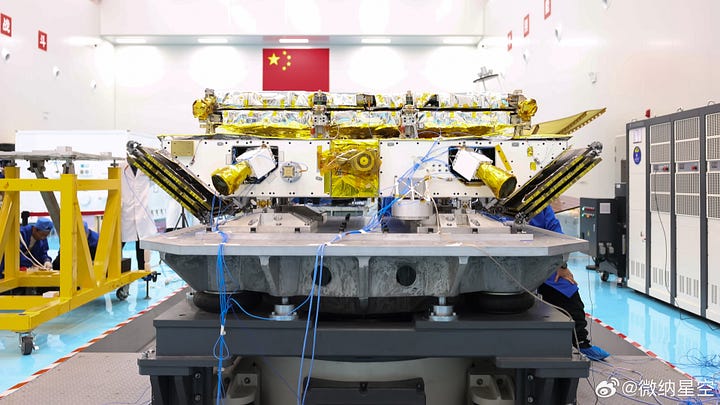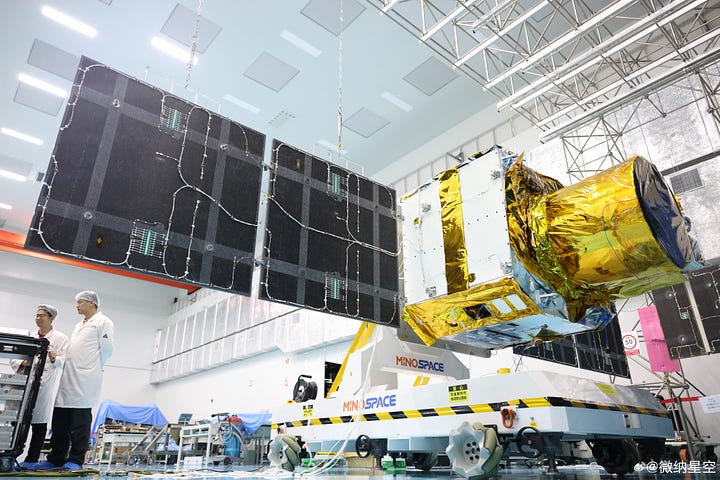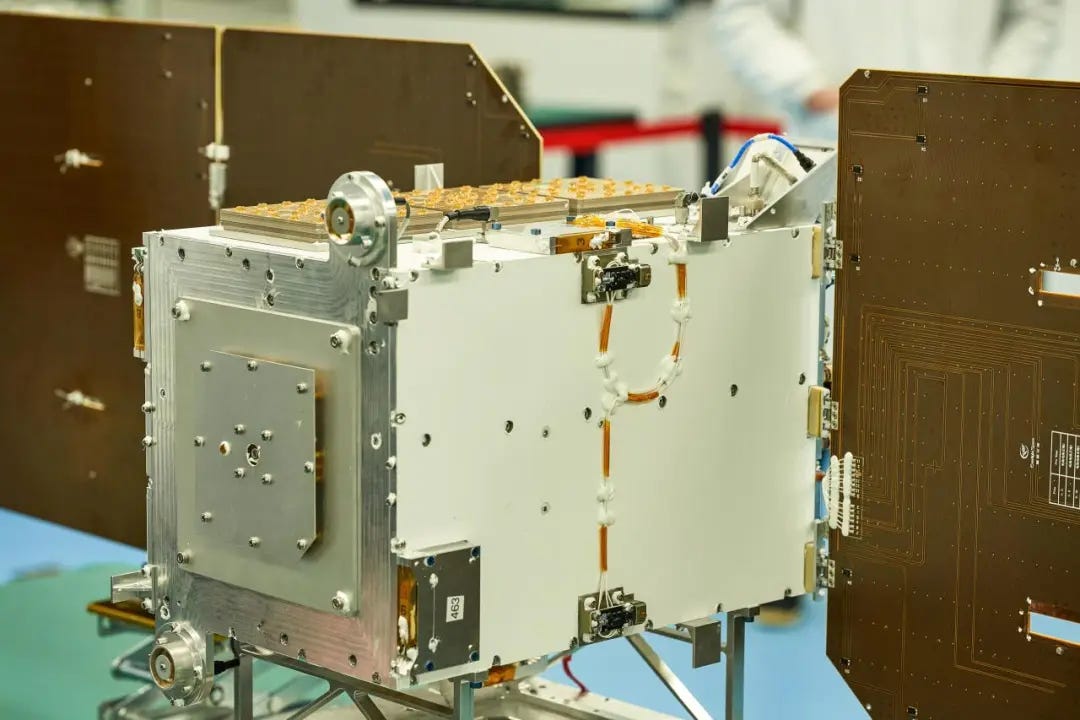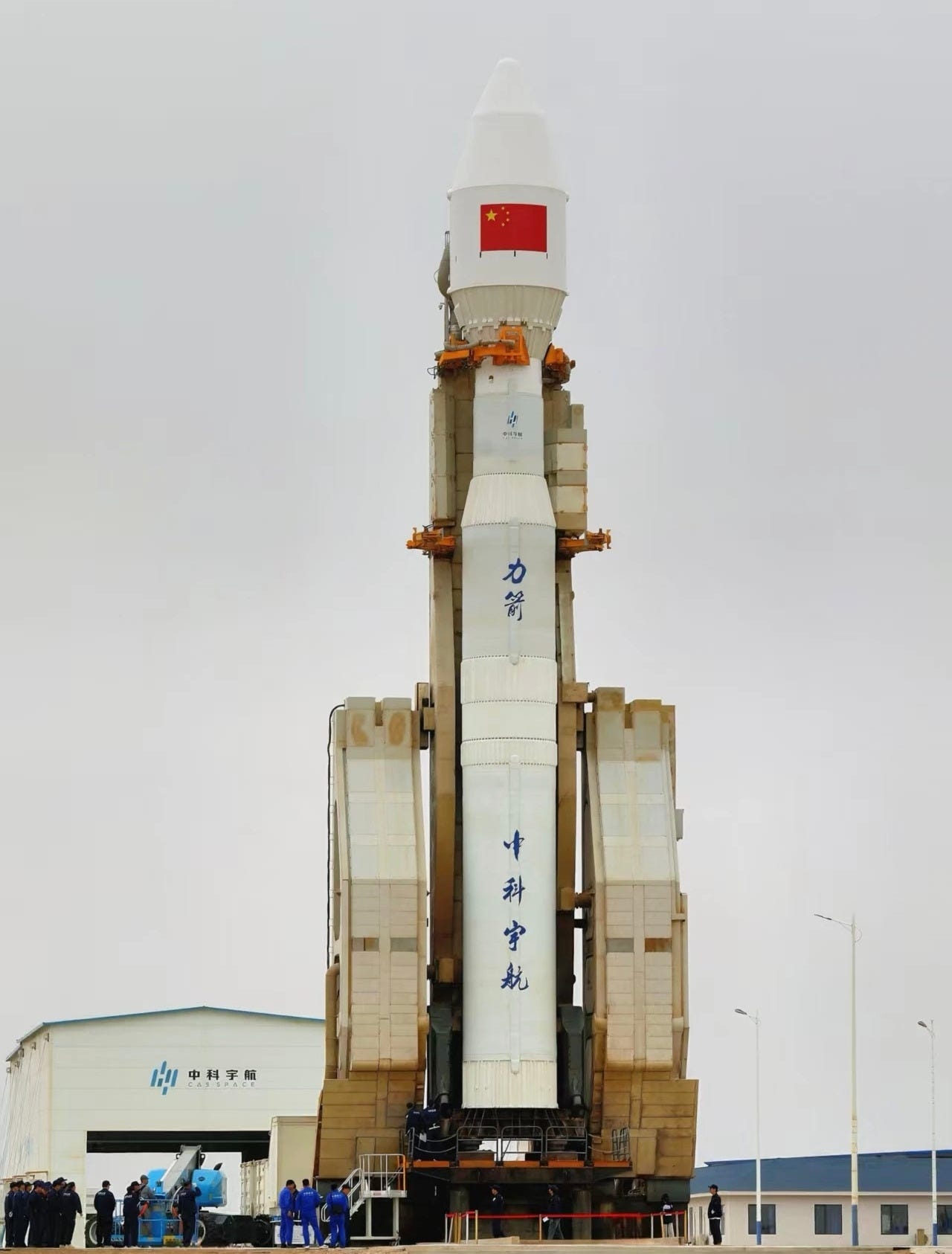CAS Space is Back in Action! [Kinetica-1 Y7]
Six satellites were riding atop of Kinetica-1's first flight back in operation.

CAS Space’s Kinetica-1 launch vehicle performed its return-to-flight mission earlier today from the Jiuquan Satellite Launch Center, at 12:05 China Standard Time (04:05 Universal Coordinated Time) on May 21st. For the mission, six customer satellites were delivered to a sun-synchronous orbit.
The satellites onboard were Taijing-3-04 (泰景三号04), Taijing-4-02A (泰景四号02A), Xingrui-11 (星睿十一号), Xingjiyuan-1 (星迹源一号), Lifang108-001 (立方108-001), and Xiguang-1-02 (西光壹号02).
Taijing-3-04 and Taijing-4-02A are from MinoSpace (微纳星空), a commercial satellite manufacturer and operator. Taijing-3-04 weighs 310 kilograms and is an optical and multispectral imaging satellite, with a resolution of 0.5 meters when imaging in the visible light spectrum and a 2-meter resolution in its multispectral mode. Meanwhile, Taijing-4-02A is a ‘flat-pack’ remote sensing satellite boasting powerful in-space computing capabilities. Both satellites are expected to provide commercial imaging services for a variety of customers.


Xingrui-11 is from Hunan Satellite Technology Co Ltd (湖南赛德雷特卫星科技有限公司) and is another remote sensing satellite. The spacecraft has an imaging resolution of 0.5 meters with its multispectral imaging system and will be used to support urban planning efforts for new autonomous vehicles and clean energy.
Xiguang-1-02 is a hyperspectral remote sensing satellite from Zhongke Xiguang Aerospace Technology Co Ltd (中科西光航天科技有限公司). This satellite is expected to serve as a technology demonstration satellite, verifying new technologies in space for a future satellite constellation.
Lifang108-001, also known as Tadahuyang-1 (塔大胡杨一号), is a small satellite jointly developed by FutureSpace (未来宇航) and Tarim University (塔里木大学), located in the Xinjiang Uygur Autonomous Region. The satellite is planned to focus on meteorological monitoring, agricultural disaster prevention, and supporting ecological protection measures. This satellite is also believed to have been the first developed in collaboration with a Xinjiang-based university, aiming to provide the region with new high-quality development momentum.
Xingjiyuan-1 is said to be a 100 kilogram-class micro-nano intelligent satellite developed by Shanghai Guoyu Zhilian Aerospace Technology Co Ltd (上海国宇智链航天科技有限公司) with a multispectral camera, boasting a two-meter resolution, onboard for remote sensing observations.
As mentioned earlier, today’s mission was Kinetica-1’s return-to-flight launch, following the loss of its Y6 mission in December 2024. That mission in December was lost due to a failure in the third-stage’s thrust vector control mechanism. Today’s launch implemented a successful fix, and following the success of the mission, CAS Space took to Twitter to celebrate, sharing:
“Kinetica-1 is back! Mission Y7 has just successfully sent six satellites into designated orbits, making a total of 63 satellites or 6 tons of payloads since its debut. Lots of missions are planned for the coming months. 2025 is going to be awesome.”
“Since 2023, Kinetica-1 has held the biggest market share among domestic civilian enterprises. With our rigorous approach, CAS Space will continuously fulfil our commitment to perfection for global clients.”
The company added on Weibo that its six successful missions have each delivered over 1,000 kilograms to orbit, for a total of over 6,000 kilograms.
CAS Space is hoping to launch five more Kinetica-1’s this year. In September 2024, while speaking to CGTN, the company shared that they were planning to conduct between eight and ten launches. Last December’s failure has evidently impacted the company’s planned launch schedule.
Today’s launch was the 7th launch for Kinetica-1 and for CAS Space. This was also the 31st launch from China in 2025.
Recap via CAS Space. Liftoff video via CNSpaceflight on Twitter as well as 航天五线谱 and 空天逐梦 Weibo.
Check out the previous launch from CAS Space
Five steps forward, one step back [Kinetica-1 Y6]
On December 27th, at 09:03 am China Standard Time, or 01:03 am Universal Coordinated Time, CAS Space launched its sixth Kinetica-1 launch vehicle from Launch Site 130 at the Jiuquan Satellite Launch Center. However a few minutes into flight the rocket suffered an anomaly.
What is Kinetica-1?
This section is for those less familiar with China's various commercial launch vehicles.
Kinetica-1 is CAS Space's first launch vehicle and consists of four stages, all burning solid fuel. CAS Space offers the ability to launch a single satellite to utilize all of the rocket's payload capacity, however more 'rideshare' missions occur for multiple satellites to be delivered in one launch.
The payload capacity of the launch vehicle is currently as follows:
2,000 kilograms to low Earth orbit
1,500 kilograms to a 500-kilometer sun-synchronous orbit
The first-stage is powered by a solid rocket booster that burns an unspecified solid fuel, generating 200 tons of thrust. The second-stage is also powered by a solid rocket booster, producing 110 tons of thrust with the same unidentified propellant. The-third stage, also using the undisclosed propellant, generates 45 tons of thrust. Finally, the fourth-stage is powered by another solid rocket booster, providing 8 tons of thrust with the same solid propellant.
On its launch pad, Kinetica-1 stands at 30 meters tall. The first two stages have a diameter of 2.65 meters, the fairing has a diameter of either 2.65 or 3.35 meters. When prepared for launch Kinetica-1 weighs a believed 135,000 kilograms.
So far, Kinetica-1 has flown all of its missions from CAS Space’s launch facility at the Jiuquan Satellite Launch Center.




![Five steps forward, one step back [Kinetica-1 Y6]](https://substackcdn.com/image/fetch/$s_!S94K!,w_1300,h_650,c_fill,f_auto,q_auto:good,fl_progressive:steep,g_auto/https%3A%2F%2Fsubstack-post-media.s3.amazonaws.com%2Fpublic%2Fimages%2Feddffef0-a585-47c1-9516-cbcaac713026_4096x2734.jpeg)
